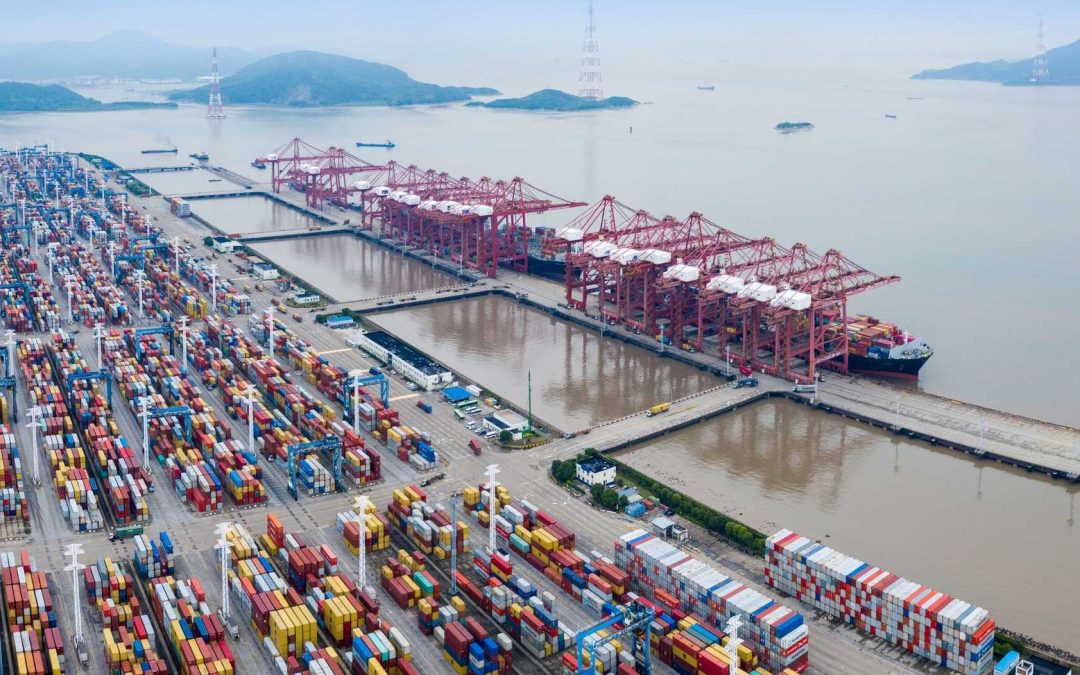Rates for shipping containers from Asia to the US fell again this week, but carriers are warning customers that they will stop accepting export bookings from unionized US Gulf and East Coast ports ahead of a looming 1 October strike deadline.
Earlier this week the International Longshoremen’s Association (ILA), which represents about 25,000 port workers employed in container and roll-on/roll-off operations at ports on the US East and Gulf coasts, reiterated that it will strike without a new collective master contract agreement.
At the same time, unions in the Netherlands and Bermuda – as well as other worldwide unions – have pledged solidarity with the ILA.
The United States Maritime Alliance (USMX) is representing the ports and is urging the ILA to resume negotiations.
A market participant told ICIS this week that it anticipates a work stoppage.
Robert Khachatryan, founder and CEO of Freight Right Logistics said the strike looks like a certainty.
“Even if the president gets involved, the ILA president said they will do slowdowns (an action where employees intentionally reduce their productivity to show dissatisfaction with their employer and gain leverage),” Khachatryan said.
Khachatryan said cargoes are already being diverted to the US West Coast, which is likely to contribute to longer delivery times and could create congestion and backlogs at the West Coast ports.
“If a strike was to stretch into weeks, that would certainly be enough time to overwhelm other ports,” Khachatryan said.
Khachatryan said the fact that much of the typical peak season cargo has been pulled forward amid efforts to beat the work stoppage may ease some of the strain on supply chains.
“Product for Black Friday and Cyber Monday (two of the busiest shopping days ahead of the Christmas holidays) should already be in the country now,” he said, adding that volumes have been tame this year compared with busier years.
“The big retailers are not expecting a massive season, and the orders reflect that,” he said.
CONTAINER RATES
Global average rates for shipping containers fell by 5% this week, according to supply chain advisors Drewry and as shown in the following chart.
Rates from Asia to both US coasts fell at a slower rate, with Shanghai to New York down by 4.5% and rates from Shanghai to Los Angeles down by less than 1%, as shown in the following chart.
Drewry said that while the looming port strike casts a shadow, weak demand is expected to drive further decreases in east-west spot rates in the coming weeks.
Judah Levine, head of research at online freight shipping marketplace and platform provider Freightos, thinks the federal government will act before a strike stretched into a second week.
“Especially in an election year, the vocally pro-labor administration may be hesitant to end a strike via the Taft-Hartley Act,” Levine said. “But the economic impact of a prolonged shutdown is something the White House likely also wants to avoid, leading many to imagine that an ILA strike would, one way or another, not be allowed to last more than a week.”
Container ships and costs for shipping containers are relevant to the chemical industry because while most chemicals are liquids and are shipped in tankers, container ships transport polymers, such as polyethylene (PE) and polypropylene (PP), are shipped in pellets.
They also transport liquid chemicals in isotanks.
LIQUID TANKER RATES STEADY
US chemical tanker rates held steady this week. Most trade lanes had limited activity due to lack of interest for spot tonnage.
On the transatlantic route things were steady this week. An outsider is going on berth for end of September dates.
However, contract volumes have been steady with regular owners.
Space for this trade lane does seem to remain available among the regulars.
Otherwise, this route has been mostly quiet, and most owners still have pockets of space left on their vessels for October.
While rates for chemical tankers ex-USG remain firm this week, as the USG to Mediterranean, and EC Mexico are steady.
The firming is due to a lack of available tonnage amid more inquiries and fixtures in this trade lanes.
However, rates to both Asia and India have been soft, especially for stainless steel vessels. It is very possible there is another rate decrease next week should this trend continue.
Overall, throughout the month the spot market should remain soft as there is open partial space in the US Gulf and as most owners continue to depend on contract tonnage.
Source: By Adam Yanelli, ICIS






